If you are considering building a house on a sloped site, let me suggest this mantra: "No house should ever be
on any hill ... It should be
of the hill, belonging to it, so hill and house could live together each the happier for the other." This idea from Frank Lloyd Wright continues to guide many architects challenged by a home under construction on a steep terrain. The goal is to sit the house within the landscape, as part of it, as opposed to dominating it. The hillside itself inspires the concept of the home.
Below you'll learn more about how to handle building on a site with a slope. We'll also look at a variety of completed project examples in which a home has successfully been nestled into the topography.
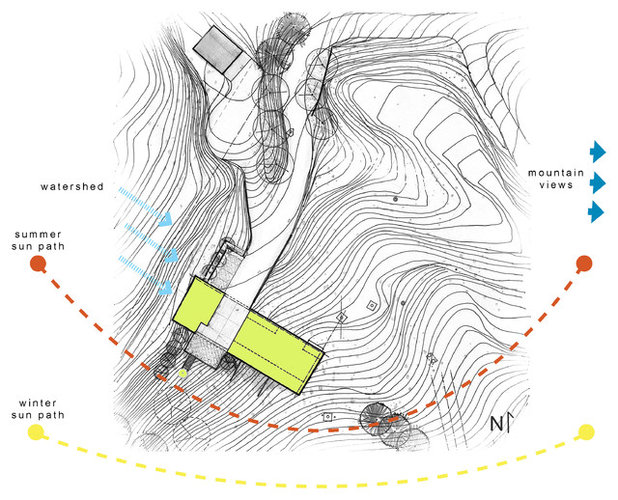
Jen Dalley ||||||||||||||
Tips for Building on a Slope
Sketch it out. After you've found the hill of your dreams, take a good look at where it makes the most sense to carve out a space for a home. Go sit on your site for hours at a time. Camp overnight if you can. Talk to the site (it's fine, no one is watching). Where will the built structure meld most elegantly with the natural environment? Does this also align with the project's other goals, such as orientation for solar and views? Sketch out all these ideas and observations.
The sketch here shows a balance in minimizing earth excavation, allowing natural water flow around the building, maintaining great southern exposure and providing views to the mountains beyond. Whew! That's a lot, right? Your architect is there to help.
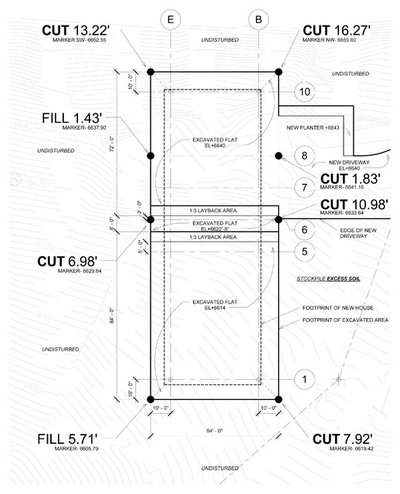
Jen Dalley ||||||||||||||
Minimize cut and fill. Once the house is approximately placed, it's time to find the best location that minimizes excavation. A survey will accurately identify the amount earth removed (cut) and earth added (fill). Doing your homework to investigate how to minimize excavation will mean less expense and a happier hillside.
Be prepared to hire big-kid toys. Take a moment to consider the equipment needed to move earth. Backhoes, loaders and rammers are key to excavating, filling and compacting soil. More time and energy is involved in preparing a steep site than a flat one. An additional area near the site may be necessary to store the excavated soil in until it is needed for backfill.
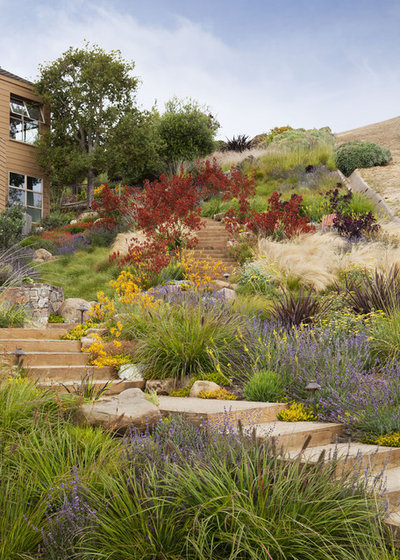
Arterra Landscape Architects
Plan to re-landscape. When you're camping you leave no trace behind, right? Take this same stance on your home as well. All the construction trucks and material deliveries will require staging areas and possibly temporary roads. Once a project is complete, replant in the areas disturbed by construction. Patience is required here, since it may be a few years until the hillside appears natural again.
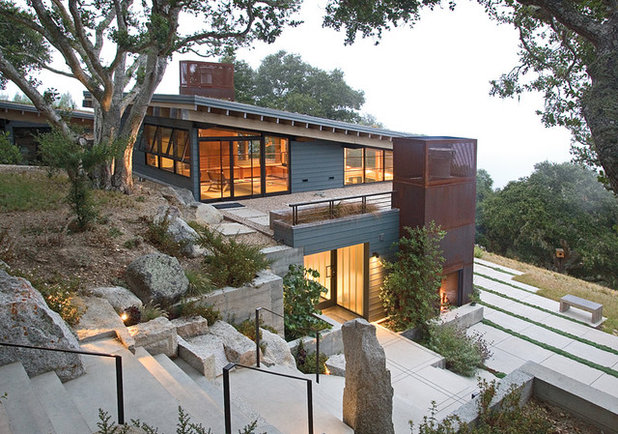
Feldman Architecture, Inc.
Examples of Houses Successfully Melded With HillsidesTerraced concrete exterior walkways create a cascading transition zone before flowing into the vegetated landscape here. Alternating strips of concrete and grass allow natural and built environments to merge.
The upper patio is perfectly positioned, extending effortlessly into the rocky mountainside.
See more of this home
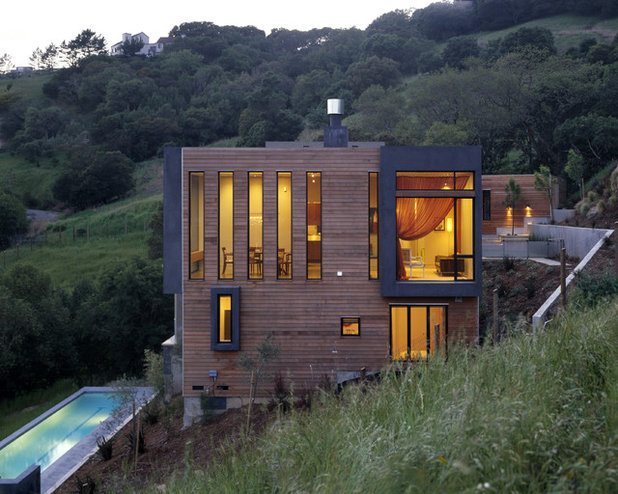
House + House Architects
Dark materials on the exterior, especially like this wood, further help a home blend with its surroundings. The landscaping wood chips create a soft buffer between the house and natural grasses, while concrete retaining walls peel from the house and hold the back the hillside.
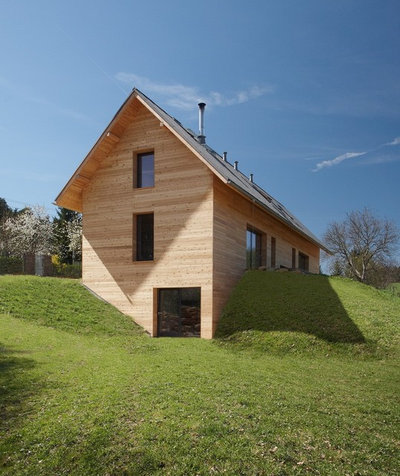
The house itself can do the heavy lifting on keeping the hill in place. The foundation walls of this home double as retaining walls, allowing the earth to embrace the structure.
The grassy berms lead your eye toward a cleverly placed window on the lower level.
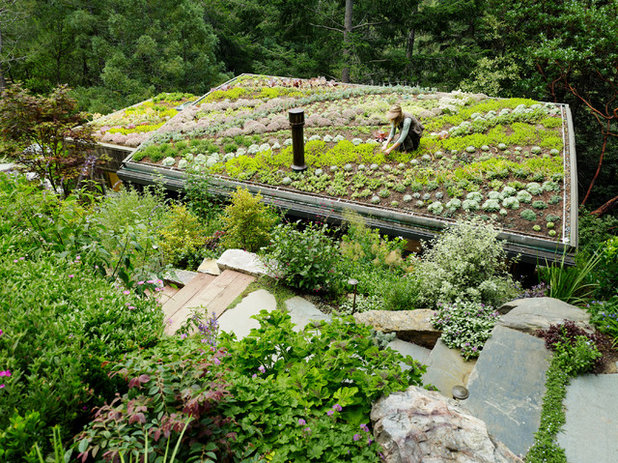
Feldman Architecture, Inc.
Although a challenge, a considerable grade change can provide easy access to rooftops. Roofs built adjacent to a hill can result in entire expanses of occupiable vegetated landscapes. The entire footprint of this house, initially borrowed from the hillside, has been restored on the roof.
See more of this house
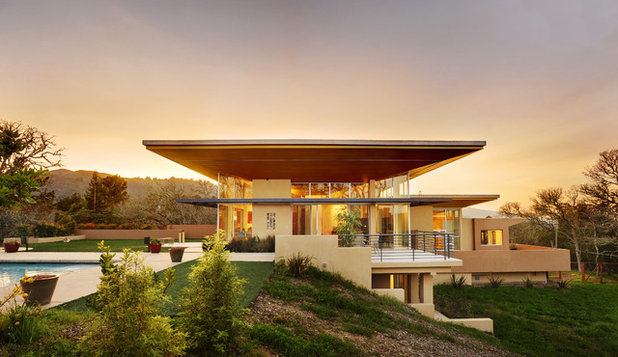
Bernard Andre Photography
Even if the roof soars horizontally above ground level, the base and a stepped retaining wall can help ground the home and connect it with the land.
Notice how the light-colored exterior material stands out against the landscape. This contrast is something to consider, along with seasonal changes, depending on your location. The overall setting for your home's appearance can differ drastically in winter and summer.
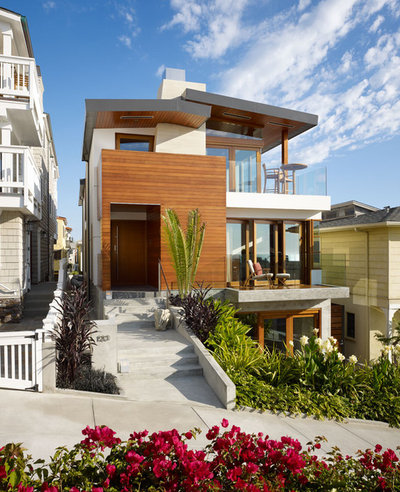
Rockefeller Partners Architects
In a dense, urban situation, an added benefit of sloping sites is that they can allow for multiple levels lit by natural light. Even the lowest level of a home can have access to an abundance of daylight.
In this case the steep site and the setbacks required by code also help neighbors have views of the ocean.

ALTUS Architecture + Design
On this site, where the majority of the surroundings are natural, intermittent concrete elements add a bit of rigor to a gradual incline that leads to the home's entrance. Elements like this are simple yet effective in creating a transition between the built and existing environments.
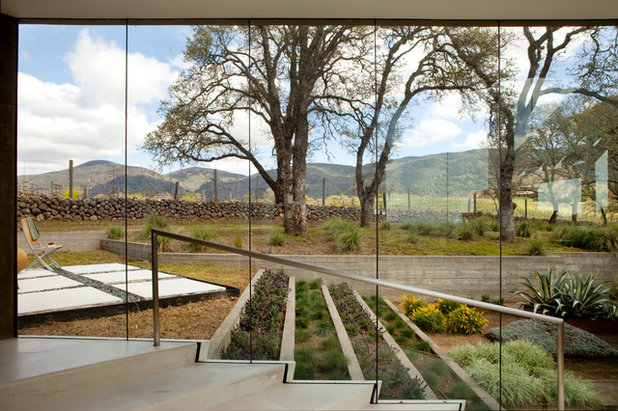
Remick Associates Architects + Master Builders
Terraced strips of vegetation on the exterior match the pattern of steps on the interior of this home. With translucent glass, this relationship between the exterior and interior is beautifully apparent and understandable.
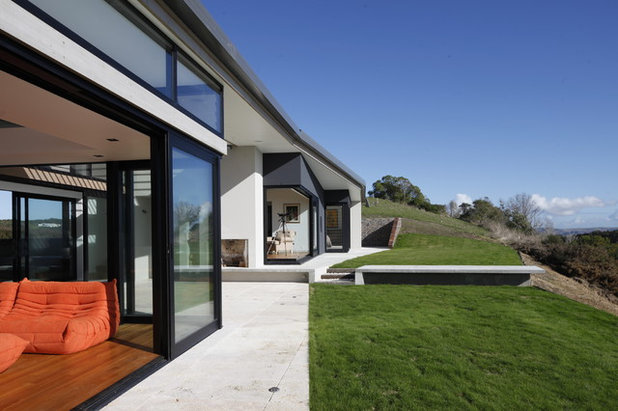
Daniel Marshall Architect
Small, simple architectural slices in the landscape can give clues to the site's original form. Inserting a concrete shelf into this hillside provided a ledge for seating while recognizing the integrity of the grade change.
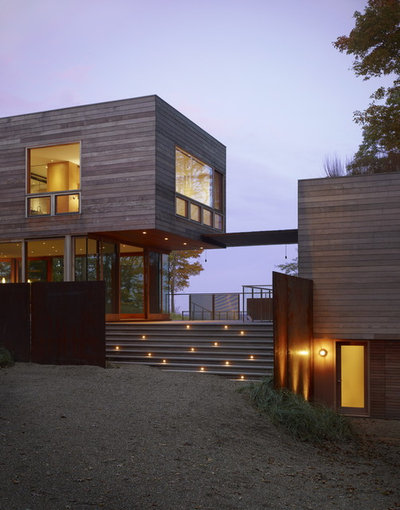
Wheeler Kearns Architects
Landscape immersion can influence terraced levels of living spaces and provide a way to incorporate playful elements, like these staggered light fixtures in the stair risers.
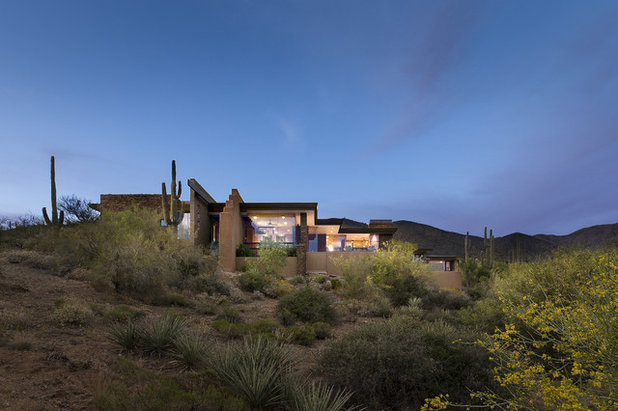
Tate Studio Architects
With any slope, whether dramatic or gradual, architecture has the ability to reinforce the natural site. When the built environment coexists with the natural environment, if seems as if the building has grown from the site, and we in turn feel more connected to the earth.
See more of this house
Tell us: How is your home integrated with its topography?
More: Cliffside Homes Encourage Living on the Edge





